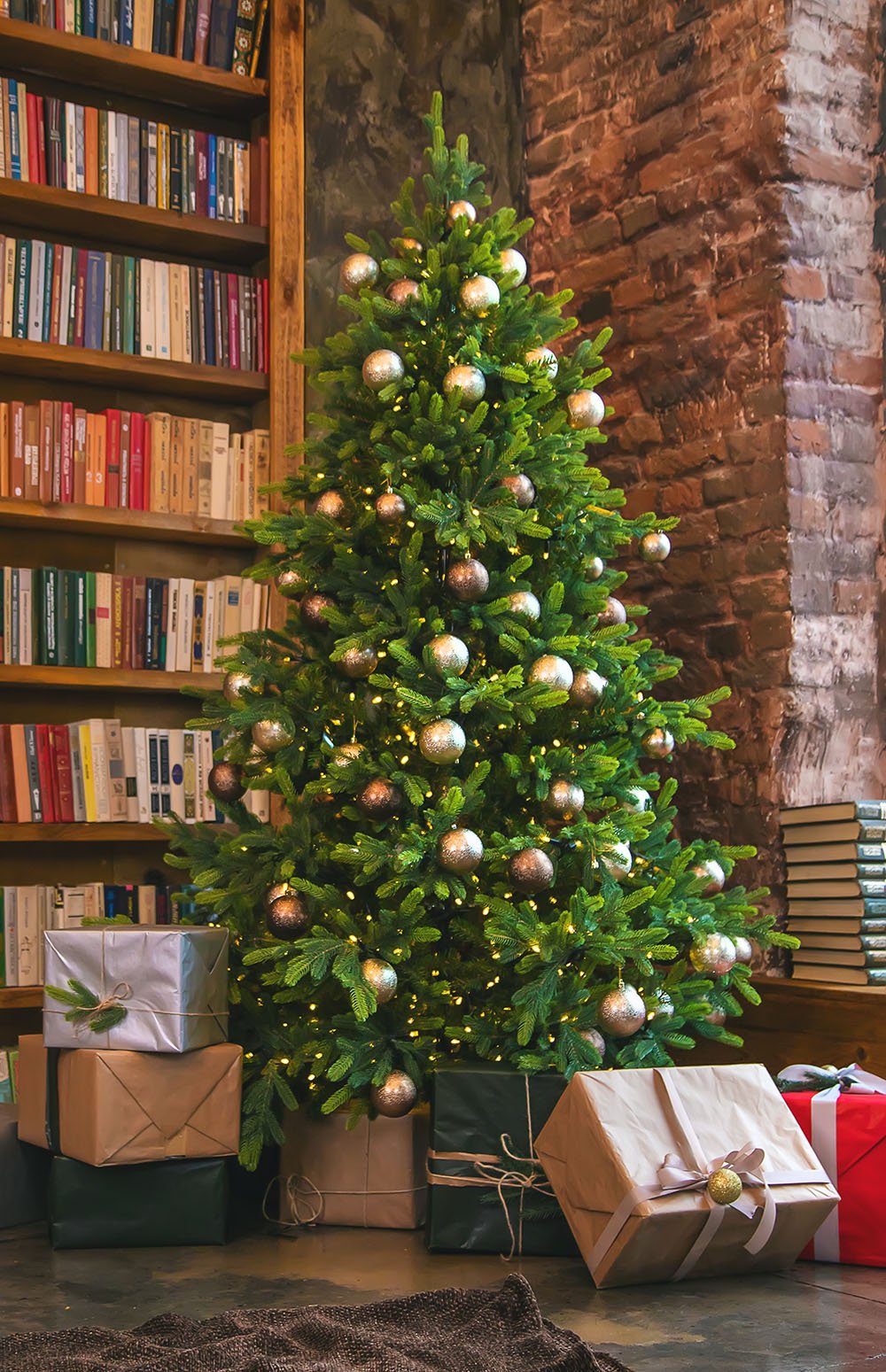Real or Fake - The Christmas Tree Debate
Written by Rose Little - Wildlife & Welfare Researcher
For my family Christmas begins the Friday before Christmas Day when the tree goes up, filling the house with music and decorating it as a family. The smell of a real Christmas tree is one of my favourite smells of the season. However, only recently I have been thinking more about where my tree comes from and its environmental impact. The British Christmas Tree Growers Association (BCTGA) estimates that 7 million trees are bought annually in the UK. It is almost a 50/50 split of real and fake trees so which group is more environmentally conscious?
A Christmas tree, commonly the Nordmann Fir tree, takes 10 - 12 years to grow to 6 feet. During that time they provide a habitat for wildlife and act as a carbon sink, storing carbon dioxide out of the atmosphere. Out of the 350 - 500 million trees growing in US farms only 30 million trees are harvested for Christmas each year. It is a fallacy that the best protection we can give a forest is to leave it alone. Managing forests can maintain the forest’s genetic diversity, protect vulnerable forest species and reduce competition from invasive species. Managing healthy forests can cut carbon emissions by 30%, helping us to stay below 1.5 degrees warming that is essential to fight climate change. The definition of a managed forest is “a sustainable forest in which usually at least one tree is planted for every tree felled”. This is the case for Christmas tree farms as they require trees for years to come.
Most of the Christmas trees sold in the UK are UK grown with only around £3 million worth imported into the UK in 2017. Imported trees pose a biosecurity risk to the UK, introducing pests and diseases that can destroy our farms and native woodland. Visit our Buying Local page on the environmental calendar to see the benefits of buying local.
To be even more sustainable you can rent or buy a potted Christmas tree that you can put outside or replant in your garden after Christmas and it will continue to grow for years to come. Potted trees continue to act as carbon sinks throughout their use over the Christmas season and they require less fertiliser than trees planted in forests as the application is more direct.
When purchasing a real tree there are certain things you can look out for to minimise your environmental impact. Firstly look for Forest Stewardship Council (FSC) certified trees. Trees cannot be certified as “organic” as wood is not covered by organic standards, but the FSC indicate trees which are grown in a responsibly managed way and often with minimal pesticides. If possible source your Christmas tree from a farm shop or organic independent retailer as they are more likely to opt for pesticide free growth. The more locally sourced the tree is, the more environmentally friendly it is. If a tree does not need to travel miles before it goes up in your house there is a significant reduction in its carbon footprint.
After Christmas, if a real tree ends up in landfill it has a greater impact on the environment (through releasing methane from decomposition) than one that is burnt or used for wood chips. Wood chips are used for mulching or can be composted to create fertilisers. Burning a real Christmas tree can reduce its potential emissions by 80% over those that are thrown into landfill. You can also place your used Christmas tree in the garden to create homes for bugs and birds or donate your tree to local zoos. Trees are used for enrichment for many animals including African Elephants, Lions, Meerkats and Orangutans.
Most artificial trees are made in China from plastic, PVC and metal before being shipped overseas, adding to their climate impact. Artificial Christmas trees cannot be recycled and so at the end of their use they will inevitably end up in landfill.
According to the Carbon Trust, a 2m artificial tree has a carbon footprint of 40kg, more than 10 times that of a real tree that’s burnt after Christmas. This means you have to reuse an artificial tree 10 times to make it carbon neutral. It is estimated that fake trees are only reused 4 times, despite their quality improving.
There are however many benefits to purchasing an artificial tree. An artificial tree can be reused year after year without the mess, fuss and waste of cutting down a real tree. They are low maintenance as they don’t shed needles or need watering throughout the Christmas period. Artificial trees are also much more cost effective. Real Christmas trees range from £25 - 40 for a 6ft tree whereas an artificial Christmas tree costs on average £100. So if you use your artificial tree for 10 years, enough time to negate its carbon impact, you will save £150 - 300. Purchase a good quality tree and look after it to ensure you can enjoy the benefits for as long as possible. As an example, my grandparents have had their tree for 40 years and it is still going strong!
I think that until we can develop technologies to dispose of artificial Christmas trees appropriately and in an environmentally conscious way, the average artificial Christmas tree is more environmentally damaging than a real Christmas tree which is reused or burnt. This is because an artificial tree has no other disposal mechanism than a landfill site. Artificial trees are also made of plastics whose production is damaging to the environment. If we could make an artificial tree from a more sustainable material it could make it a much better option than a real tree. Until then I will continue to buy a real tree although this year I would like to get one that can be replanted and used for years to come.
Please click the link below to visit our Environmental Calendar. Each month we focus on a new environmental topic and look in to how we can all help to improve the world we live in.


